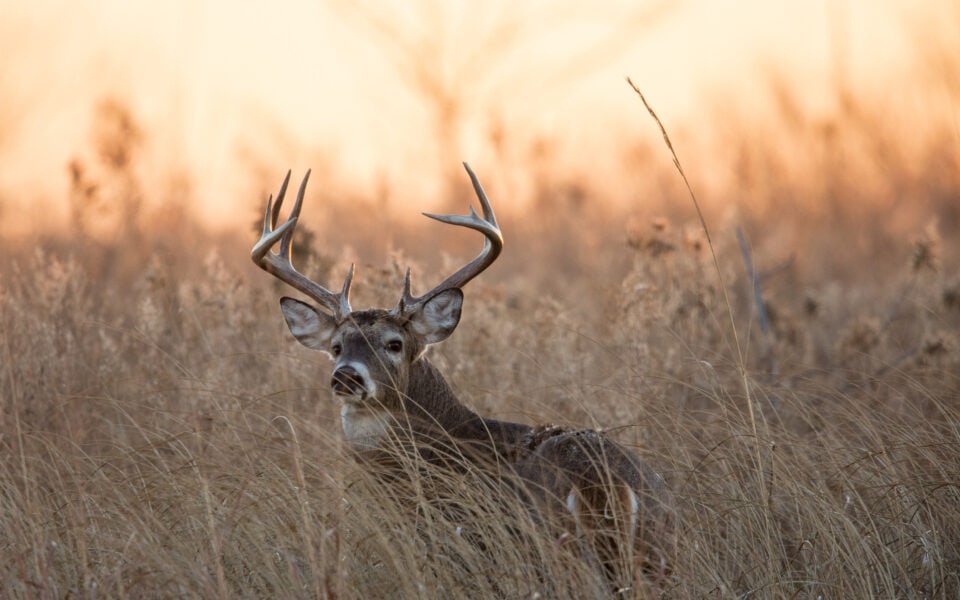A Native Grass Restoration Project
When my grandfather moved from Texas back home to Mississippi in 1964, he had finally found his passion in “cattle farming.” He sold his ranch, moved back home, and bought 650 acres in Madison County, to convert to cattle pastures and start all over again. For two generations he managed that farm purely for cattle and kept all pastures in highly maintained Bermuda grass.
A Bermuda grass expert would have seen it and shed a tear. As I grew up, however, my passion for hunting and lack of passion for cows started to suggest a new future for the farm. Since my grandfather’s passing, my father and I have envisioned a new purpose for the farm aimed at turning it into a wildlife paradise. After hunting that property hard for several decades and running frequent camera surveys, it was clear that we weren’t holding anywhere near the capacity of wildlife that we should have. We decided to schedule meetings with a few biologists to discuss our concerns and goals for the farm, and what we heard was a bit of a shock. The first biologist looked out at our vivid green Bermuda pastures and said, “Might as well be asphalt out there.” So we had a second biologist out to hear his opinion instead. He said, “Might as well be a desert.” Then we called the third biologist and told him what the first two biologists had said and he just let out a long, sad, sigh. It was clear then. We had identified a major problem.
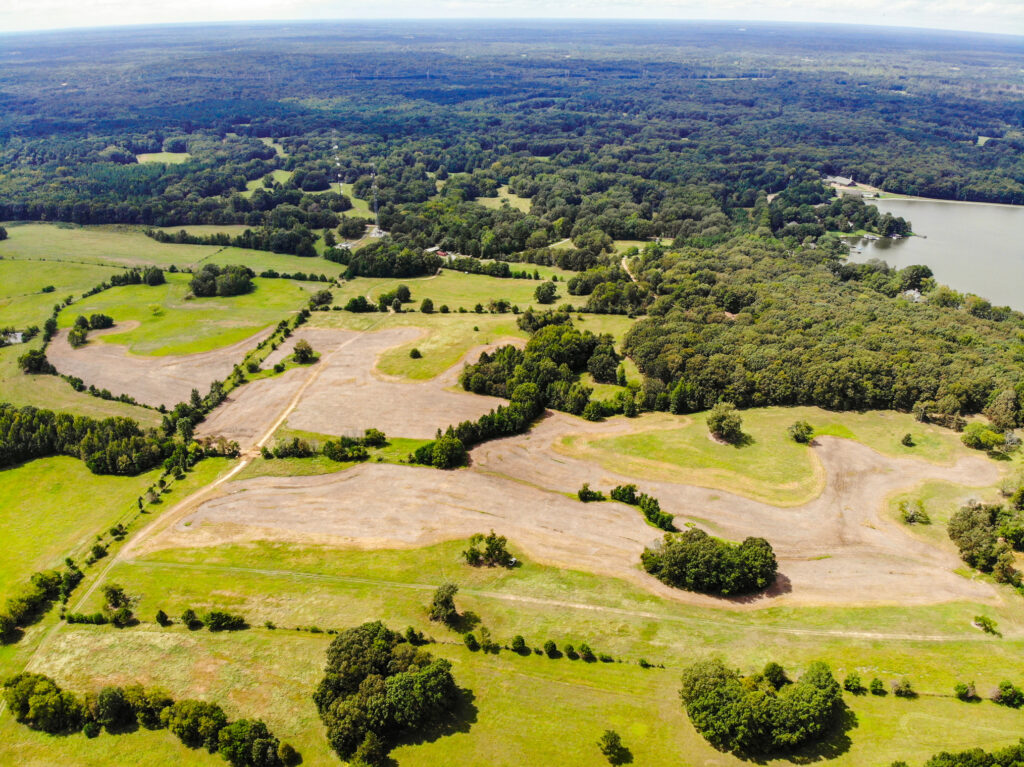
We spent about a year consulting these biologists and formulating a plan for the farm before we pulled the trigger on anything. With Bermuda grass, as it turns out, the “nuclear option” is the only way. Since it has zero wildlife value and an aggressive growth rate, multiple rounds of Roundup was the consensus between all of our consultants. This was a tough decision for us, as it would take our golf course-looking farm and turn it into a moonscape for about two years. We ultimately decided that the long-term benefits of a native grass restoration project would outweigh the short-term pitfalls of scorching the earth.
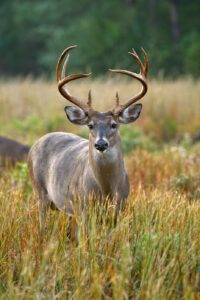 Our vision for the farm was this: to create a wildlife paradise that provided ample hunting opportunities for deer, turkeys, doves, and rabbits while still preserving some of the beauty and vistas that we love. This farm is not a single-purpose property – my parents plan to build a house and my wife and I still enjoy a nice walk on the hilltops in the fall. For these reasons, we don’t want the whole place to turn into a thicket. So with all of these needs in mind, we formulated a plan with our biologists for about a year. The plan is as follows.
Our vision for the farm was this: to create a wildlife paradise that provided ample hunting opportunities for deer, turkeys, doves, and rabbits while still preserving some of the beauty and vistas that we love. This farm is not a single-purpose property – my parents plan to build a house and my wife and I still enjoy a nice walk on the hilltops in the fall. For these reasons, we don’t want the whole place to turn into a thicket. So with all of these needs in mind, we formulated a plan with our biologists for about a year. The plan is as follows.
Everything in our management plan is based on following the topography of the farm, not the existing fence lines. Starting in the bottoms, we will supplement the trees in the ditch lines by planting plum trees. These provide good cover as well as food for the deer and me. The problem we are addressing there is a lack of connectivity between the north and south sides of our place. Deer are not able to travel from the woods in the south to the will-be native grass fields in the north without being exposed, so we will plant more trees along those natural ditch lines to thicken their cover and create highways for them to travel. Then, above the ditches, we will scorch everything with roundup—up to about three-quarters of the way to the ridgetops. This will be where we plant native grasses. Just below the ridgetops we will plant 10-15 rows of wheat once a year and allow it to grow all year. On the ridge-tops, we will manage a blend of clovers. It should last almost year-round with proper management. So in review, we will have trees along the ditches, native grasses most of the way up the ridge sides, wheat around the ridge tops, and clover on the crests of the ridges.
In the woods, the few thickets that we have are turning into open woods. We have limited thick areas on this property as it is, so we plan to go in and “hack n’ squirt” the undesirable trees in those areas to encourage browse and undergrowth to get reestablished. The rest of our woods are over-mature hardwood timber on steep ridges. Experts tell us they need to be cut, but they are so absolutely beautiful that we just can’t bring ourselves to do it. We will re-thicken the old thickets, do some thickening along the ditches, and call that good enough.
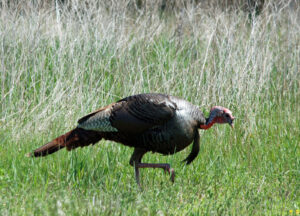 The process I’ve described will take close to two years. The bulk of the work is in eradicating Bermuda grass. We sprayed our first pass in the spring, and within about a month it was fresh green Bermuda again. We sprayed it again and mostly junk came back. We will spray it for a third time soon (mid-September), and the biologists tell us this will be the one to wipe it all out. Those areas will stay dead and barren throughout this first winter. In the spring of next year, if necessary, we will spray one more time. At that point, we will truly be down to bare dirt and will finally be ready to plant a mixture of native grasses such as little bluestem, big bluestem, Indian paintbrush, and various forbs. We have started this process with about half of the total acreage we plan to convert to avoid scorching the majority of our place all at once. Next year we will try something slightly different with the other half of the acreage we are converting. Before our first pass of roundup, we will plant Roundup-ready soybeans in the spring and then spray the 3-4 rounds throughout the summer. In theory, the beans should grow all summer and provide forage for wildlife and still allow us to kill the grass beneath. The hope is that maybe we don’t have to deal with such a long period of bare ground. We will try both methods and let you know what worked best!
The process I’ve described will take close to two years. The bulk of the work is in eradicating Bermuda grass. We sprayed our first pass in the spring, and within about a month it was fresh green Bermuda again. We sprayed it again and mostly junk came back. We will spray it for a third time soon (mid-September), and the biologists tell us this will be the one to wipe it all out. Those areas will stay dead and barren throughout this first winter. In the spring of next year, if necessary, we will spray one more time. At that point, we will truly be down to bare dirt and will finally be ready to plant a mixture of native grasses such as little bluestem, big bluestem, Indian paintbrush, and various forbs. We have started this process with about half of the total acreage we plan to convert to avoid scorching the majority of our place all at once. Next year we will try something slightly different with the other half of the acreage we are converting. Before our first pass of roundup, we will plant Roundup-ready soybeans in the spring and then spray the 3-4 rounds throughout the summer. In theory, the beans should grow all summer and provide forage for wildlife and still allow us to kill the grass beneath. The hope is that maybe we don’t have to deal with such a long period of bare ground. We will try both methods and let you know what worked best!
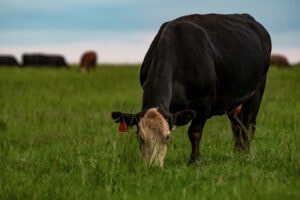 Now that I’ve described the habitat changes that will be taking place, let’s talk about the annual management schedule for our new farm. First, the native grass areas will need to be burned every three years. We will divide all the acreage into thirds and burn one each year. That way, we will have three different types of grass habitat: fresh burns, 1-2-year growth, and overgrown grasses. The wheat around the ridgetops will be planted every fall and left to grow all year. It will first emerge as a green grass that deer will love throughout the fall and winter. In the spring and summer, it will continue to grow to a head which will provide forage and nesting cover for turkeys. In the late summer, we will clip and burn it, then hunt doves over it before replanting for the next year. For the clover on the ridgetops we will replant new clover at the same time we plant the wheat and then spray with selective grass killer once or twice throughout the year to prevent grass from taking over. In the woods, we will keep the thickets thick by killing off undesirable trees every few years.
Now that I’ve described the habitat changes that will be taking place, let’s talk about the annual management schedule for our new farm. First, the native grass areas will need to be burned every three years. We will divide all the acreage into thirds and burn one each year. That way, we will have three different types of grass habitat: fresh burns, 1-2-year growth, and overgrown grasses. The wheat around the ridgetops will be planted every fall and left to grow all year. It will first emerge as a green grass that deer will love throughout the fall and winter. In the spring and summer, it will continue to grow to a head which will provide forage and nesting cover for turkeys. In the late summer, we will clip and burn it, then hunt doves over it before replanting for the next year. For the clover on the ridgetops we will replant new clover at the same time we plant the wheat and then spray with selective grass killer once or twice throughout the year to prevent grass from taking over. In the woods, we will keep the thickets thick by killing off undesirable trees every few years.
We are just now reaching the end of our first summer and the anticipation is already high to see what our new farm will look like. Although the bottom three-quarters of the ridges are dead right now, we will still plant wheat and clover on the ridgetops for this winter to provide at least some food and habitat for the winter months. The key to this big plan is to make a schedule and stick to it. Missing our chance to spray or missing out on our window to plant could postpone results for yet another year, so prioritizing weather windows for this work is essential! Overall, we expect to double our wildlife habitat, preserve the beauty of our property, improve hunting, and lower overall maintenance at the same time. We are excited to see what the new look of the farm will be like, and we feel great about creating quality new habitat for our wildlife. I will write next year with an update on our progress and include some pictures of our first native grass growth!
Join our weekly newsletter or subscribe to GameKeepers Magazine.
Your source for information, equipment, know-how, deals and discounts to help you get the most from every hard-earned moment in the field.

